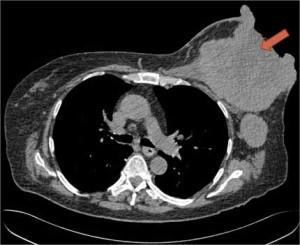
If caught early, breast cancer can be treated with a very high success rate. Breast cancer is one of the most treatable cancers because of the advancements in lumpectomy and mastectomy surgery, and the early detection methods that have been developed in recent times.
Nevertheless, the discovery of any type of cancer is extremely distressing. It has a huge impact on people’s lives. Breast cancer is particularly upsetting for women, because their breasts are considered part of their femininity and sexuality.
The Center for Diagnostic Imaging always recommends that women have regular mammograms so that their physicians can detect any occurrence of cancerous cells at a very early stage. This is the stage at which non-invasive treatments can usually get the cancer sufferer into remission. In order to have the scans done, a woman must find a convenient imaging center that complies with her physician’s standards. Many women in South Florida choose one of the CDI Miami offices, conveniently located in Aventura, North Miami Beach and South Dade.
The Center for Diagnostic Imaging always recommends that women have regular mammograms so that their physicians can detect any occurrence of cancerous cells at a very early stage. This is the stage at which non-invasive treatments can usually get the cancer sufferer into remission. In order to have the scans done, a woman must find a convenient imaging center that complies with her physician’s standards. Many women in South Florida choose one of the CDI Miami offices, conveniently located in Aventura, North Miami Beach and South Dade.
Medical imaging can get expensive, so it is vitally important that patients find a center they can trust, where they know they will receive the best quality images that do not contain any errors.The South Florida CDI offices have the very latest imaging equipment available in every center. Fully qualified radiologists, experts at using the scanners and reading the results, are employed at every CDI location.The Center for Diagnostic Imaging’s facilities in North Miami Beach uses 3D mammography, an imaging technique that can detect breast cancer at a very early stage. An MRI scan can pinpoint disease centers in the body and these can be monitored on a regular basis for any changes, which could indicate future potential problems. People searching for a pet scan in Miami will find that CDI Miami comes highly recommended, based on the local popularity of the centers and the high quality of service offered at every location. CDI Miami even gives patients the option to have a full body CT scan. This will give the radiologists an entire map of what is going on inside the body so that potential disease can be detected. This information is then passed onto the patient’s physician. Any abnormalities that show up can then be treated immediately, or monitored to check for any developments. So many people who end up with life-threatening illnesses and conditions could have been saved a lot of pain and anguish if they had been able to detect problems and treat them at a very early stage.
About CDI Miami: CDI Miami is the Center for Diagnostic Imaging, the premier center for CT scan Miami with locations in South Florida at Aventura, North Miami Beach, and South Dade. For more information and to book a consultation, call toll free on 800-371-0002 or visit cdimiami.com






